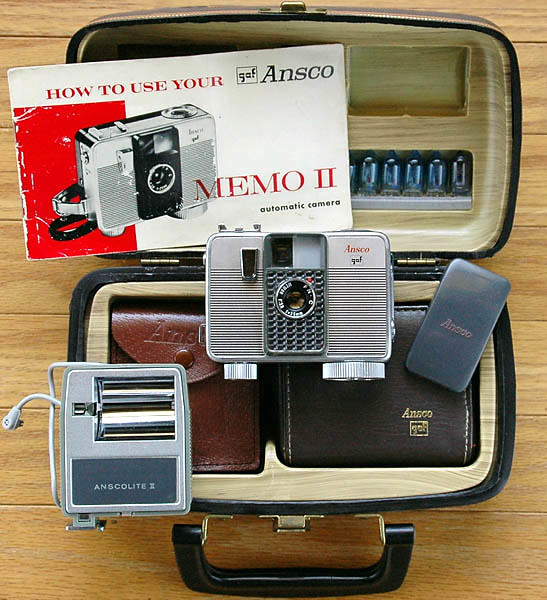Difference between revisions of "GAF Ansco Memo II"
(stub with new CW pool photo) |
m (small fixes) |
||
| Line 9: | Line 9: | ||
}} | }} | ||
| − | ''Note that the 1920s [[Ansco Memo]] is a completely camera, although also one using the half-35mm format.'' | + | ''Note that the 1920s [[Ansco Memo]] is a completely different camera, although also one using the same half-35mm format.'' |
| − | [[Ansco]] began using the name [[GAF]] on cameras in 1967; and although this camera carries both names it is actually a rebranding of the [[Ricoh Auto Half]] from Japan. It | + | [[Ansco]] began using the name [[GAF]] on cameras in 1967; and although this camera carries both names it is actually a rebranding of the [[Ricoh Auto Half]] from Japan. It has a 25mm f/2.8 Memar lens and a [[selenium meter]] which automatically sets the exposure. The half-frame image size economized on film and allowed a compact body, but the format never caught on in the US market as widely as it had in Japan. |
[[Category:Japanese half-frame viewfinder]] [[Category:Ricoh|GAF Ansco Memo II]] [[Category:Spring motor]] | [[Category:Japanese half-frame viewfinder]] [[Category:Ricoh|GAF Ansco Memo II]] [[Category:Spring motor]] | ||
Revision as of 01:03, 4 October 2011
This article is a stub. You can help Camera-wiki.org by expanding it.

|
| GAF Ansco Memo II kit image by Kuro Neko (Image rights) |
Note that the 1920s Ansco Memo is a completely different camera, although also one using the same half-35mm format.
Ansco began using the name GAF on cameras in 1967; and although this camera carries both names it is actually a rebranding of the Ricoh Auto Half from Japan. It has a 25mm f/2.8 Memar lens and a selenium meter which automatically sets the exposure. The half-frame image size economized on film and allowed a compact body, but the format never caught on in the US market as widely as it had in Japan.